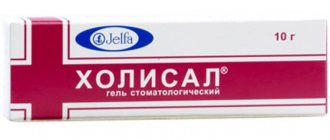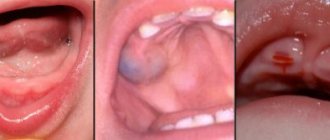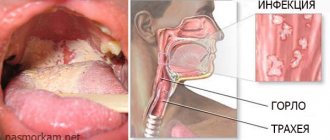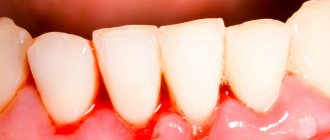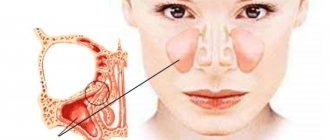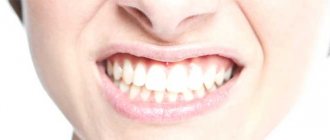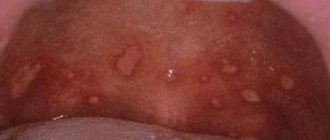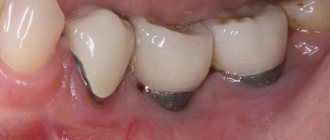What is the danger of the disease and what to do to stop the development of inflammation
Often, people begin to have problems with teeth because they have ignored diseases of the gums and periodontal tissues for a long time, and also did not pay attention to such a phenomenon as catarrhal gingivitis in time. As a result, the inflammatory process on the mucous membrane gradually began to affect the ligaments that firmly hold the tooth in the socket.
We do not want readers to miss the characteristic signs of seemingly harmless, but in the long term very dangerous diseases. Therefore, if you are guarding your health, then read the material presented below.
Prevention
In order not to resort to treatment of gingivitis at home or not to visit a specialist again, you need to monitor your oral hygiene every day. When brushing your teeth, you need to get rid of plaque. Therefore, this self-care procedure should not take a few seconds. It is better to be attentive to your body.
After each procedure, a number of activities must be performed. It is recommended to use dental floss to help remove stuck pieces of food. It would also be a good idea to use special antiseptics to rinse your mouth.
If a person experiences any unpleasant symptoms, it is imperative to consult a specialist. The same must be done if an injury to the oral cavity occurs.
What is hidden behind the concept of “catarrhal gingivitis”
The disease is included in the list of the international classification of diseases ICD-10, developed by WHO. Catarrhal gingivitis is characterized by superficial inflammation of the gums. Dental tissues and ligaments are not affected. The disease is the most common form of gingivitis, compared with granulomatous and atrophic, erosive and desquamative pathologies, it occurs in 90% of all clinical cases.
Experts note that this form of the disease affects mainly children, as well as young people, predominantly male, who have not yet reached the age of 35.
Symptoms
The symptoms of acute and chronic forms are quite similar, however, they differ in severity.
Spicy
The clinical picture of the acute form develops quite quickly. As a rule, an unbearable sharp pain occurs in the oral cavity, which is accompanied by an increase in temperature.
The entire body is weakened. The patient has:
- the appearance of a feeling of itching and burning in areas of localization of foci of inflammation;
- change in the color of the gums, they become bright red;
- the appearance of severe headaches;
- swelling of the gums and their bleeding;
- formation of a significant amount of plaque on the enamel and mucosa;
- changes in the parameters of the gingival papillae.
The development of such a serious pathology does not allow us to ignore the problem. Therefore, as a rule, patients quickly rush to see a doctor who diagnoses the oral cavity and prescribes appropriate treatment.
Note! Untimely initiation of therapy during the development of an acute form of the disease can result in its chronic course.
Chronic
As mentioned above, the chronic form of the pathology occurs due to untimely treatment of acute gingivitis. Relapse of the inflammatory process has a less pronounced clinical picture.
As a rule, patients observe:
- thickening of the gum layer;
- darkening of the affected areas of the mucous membrane to a bluish tint;
- change in color and enlargement of gingival papillae;
- the appearance of space between the papillae and teeth;
- the occurrence of pain, itching, burning, bleeding gums during chewing food and hygiene procedures.
Important! Despite the “bouquet” of unpleasant symptoms, during the development of both acute and chronic forms of gingivitis, the bone organs remain immobile. The appearance of their instability indicates the transformation of pathology into periodontitis.
Who is most likely to get sick?
Catarrhal gingivitis occurs in children and adults due to the following triggers:
- teething: in this case, the pathology is acute, and its manifestations subside after the tooth crown emerges from the gums,
- violation of oral hygiene: if you neglect to clean your teeth, gums, and interdental spaces, then be prepared that the plaque on your enamel will mineralize, i.e. will become very dense, and bacteria will continually multiply on it, which will begin to infect the mucous membrane at the slightest weakening of the immune system or its injury,
- working in hazardous industries, living in environmentally unfavorable areas,
- injuries to the mucous membrane: for example, in children, injury can be caused by a blow or fall, or foreign objects in the mouth. Regardless of age, pathology can occur against the background of thermal and chemical burns, damaged teeth - for example, a tooth has chipped or dislocated, the patient suffers from cervical caries. The cause of injury may be malocclusion, the presence of poorly fitting crowns and dentures, misaligned wisdom teeth,
- deterioration in the composition of saliva or its absence: dry mouth is a reason to take care of saturating the body with water, because It is the lack of saliva or the deterioration of its protective properties that often causes excessive proliferation of pathogenic microorganisms in the mouth. The composition of saliva deteriorates in people with vitamin deficiency, metabolic disorders and endocrine abnormalities, in pregnant women, women during menopause, women taking oral contraceptives, in adolescents, in those with diabetes,
- diseases: any cold that reduces general immunity, for example, influenza or ARVI, can cause an inflammatory process on the mucous membrane, as well as an exacerbation of chronic catarrhal gingivitis. As well as taking antibiotics and medications against it. Naturally, more serious problems can also be the cause - HIV, leukemia, hepatitis, ulcers.
Causes
The main reason for the development of catarrhal gingivitis is systemic poor oral hygiene. As a result, pathogenic organisms and their waste products accumulate on the gums. This leads to the accumulation of soft and hard plaque, including food debris. All factors leading to the development of gingivitis are divided into:
- local (tooth trauma, medium-depth caries, development of malocclusion, improper or insufficient dental care);
- systemic (chronic diseases, puberty, teething, bad habits, viral infections).
The most common provoking factors for acute gingivitis are:
- brown plaque on teeth (biofilm, microbial plaques);
- teething in children;
- developmental anomalies (dystopia or crowding of teeth, short frenulum of the tongue or small vestibule);
- caries (most often cervical);
- malocclusion;
- various tooth injuries;
- periods of hormonal changes in the body (adolescence, pregnancy, menopause). Read more about the treatment of gingivitis during pregnancy below;
- chronic metabolic disorders.
Gum inflammation is often caused by bad habits, primarily smoking. It can also be triggered by taking certain medications. These include oral contraceptives, immunosuppressants, and cystostatics. If gingivitis is caused by physiological reasons, recovery will occur quickly. Without adequate treatment, the problem becomes chronic.
Teething in a child is the cause of short-term gingivitis. Inflammation does not require special treatment. It goes away on its own after the dental crown comes out of the gums. The same applies to the eruption of wisdom teeth in adulthood.
Pathology manifestation clinic
A history of catarrhal gingivitis is usually accompanied by swelling of the mucous membrane, a change in its shade from pink to bright red. First, the process affects one or more teeth; it manifests itself quite acutely, which indicates an acute stage of the disease. The patient is accompanied by bleeding and itching in the gums, a feeling of fullness, and a burning sensation. Bleeding becomes stronger as the inflammatory process spreads and worsens. Next, discomfort and pain appear when eating food: in the absence of treatment, painful sensations occur with any palpation of the mucous membrane, with any mechanical impact and pressure, or when brushing your teeth.
“Usually, the general condition of a patient with acute catarrhal gingivitis does not worsen, and symptoms such as weakness and lethargy, increased body temperature can only occur when the process spreads to the entire dentition, i.e. becomes generalized. But during the chronic stage, many complain that bleeding gums occur even against the background of the slightest physical impact or pressure. Patients also develop bad breath, the gums become bluish and thicken, there is a constant taste of blood or metal in the mouth, plaque begins to accumulate on the enamel faster and more intensely than usual,” explains Svetlana Anatolyevna Balakina, periodontist.
Fighting exacerbations
Treatment of exacerbations of catarrhal gingivitis is aimed at reducing the severity of inflammation and intoxication of the body. The duration of therapy in this case is from 7 to 10 days. To eliminate the symptoms of the disorder, patients are prescribed: anti-inflammatory drugs (Ketarolac, Ibuprofen), antihistamines (Tavegil, Zodak, Zyrtec). During treatment, the patient is prohibited from consuming food that irritates the mucous membranes of the mouth.
Antiseptic treatment of gums should be carried out before removing plaque and after removing it to prevent toxemia. To reduce pain, it is allowed to use applications based on Lidocaine 5%. Metranidazole and Chlorhexidine are used for antiseptic treatment of affected areas of the gums.
We suggest you read: The best pain reliever for toothache
In the stage of active inflammation, it is forbidden to brush your teeth intensively. Damage to the soft tissue of the gums aggravates the course of catarrhal gingivitis. During therapy, instead of hygiene procedures, antiseptic rinses are performed. Thorough teeth cleaning begins only after acute signs of the disease have been eliminated.
Antiseptic treatment of gums should be carried out before removing plaque and after removing it to prevent toxemia. To reduce pain, it is allowed to use applications based on Lidocaine 5%. Metranidazole and Chlorhexidine are used for antiseptic treatment of affected areas of the gums.
To prolong the effect of painkillers and antimicrobial drugs, a medicinal film of Deplene-dent is applied to the gums
To prolong the effect of painkillers and antimicrobial drugs, a medicinal film of Deplene-dent is applied to the gums
There are two types of activity of catarrhal gingivitis: acute (exacerbation period) and chronic (remission period). In the first case, the disease progresses quickly, but subsides after some time. The chronic form occurs due to the lack of acute treatment and is characterized by periodic exacerbations and a long course.
Further inaction can lead to the development of other forms of gingivitis: desquamative, hypertrophic, ulcerative, ulcerative-necrotic. In addition, inflammation can take over the dental and jaw areas, destroying the teeth at the base or forming a purulent-necrotic abscess.
Purulent-necrotic abscess
Catarrhal gingivitis: what is it like?
Doctors identify several forms and stages of development of the disease.
| Classification | Kinds |
| According to the nature of the course |
|
| By area of distribution |
|
| According to the severity of the lesion |
|
Important! In adults, several days usually pass from the onset of the disease to the detection of its clear manifestations. In the absence of therapeutic measures and after three weeks, the pathology reaches the chronic stage.
Classification
The disease is classified into several types depending on the form of the course, the scale of inflammation and severity. According to the first criterion, pathology is divided into acute and chronic. Acute gingivitis progresses rapidly and is accompanied by clear clinical signs, but is observed only once. The chronic type of disorder is characterized by slow development and vague symptoms.
Depending on the degree of inflammation, there are 2 types of disorders:
- Localized – up to 1/3 of the gum is affected.
- Generalized. Inflammation spreads along the entire length of periodontal tissue and is observed on both jaws.
According to the severity of the course, gingivitis is divided into:
- Mild degree. Only damage to the intergingival papillae is noted.
- Moderate degree - damage to the free area of soft tissue (marginal zone) is noted.
- Severe degree - the pathological process covers the entire alveolar region.
Which form of the disease is considered the most dangerous and why?
Inflammation of the mucous membrane requires immediate treatment. After all, if you do not stop it, then gradually the disease will affect all the teeth and turn into chronic generalized catarrhal gingivitis. This form of pathology is considered the most dangerous, because it borders on an even more serious disease – periodontitis. Here, not only the superficial part of the mucous membrane and soft tissues of the gums are affected, but also the periodontal tissues are affected. They are responsible for reliably holding our teeth in the socket. Those. in generalized stages, the patient may feel that his teeth are loose, shifting and are about to fall out. This causes severe discomfort; eating and chewing food becomes very difficult, plus an aesthetic component is added: the smile ceases to look attractive.
Important! Remember that with catarrhal gingivitis, the teeth still remain immobile. But if you notice that they have begun to wobble and have lost their former stability, then the disease is probably complicated by periodontitis.
This pathology can no longer be treated with conservative treatment, which takes several weeks. It will take months to get rid of the problem, comprehensively, and it tends to recur. What is most dangerous is that in generalized stages, specialists sometimes see no other way out than to remove infected teeth and replace them with removable dentures or fixed dentures on implants.
Also, a long course of chronic gingivitis can be complicated by the transition of the disease to the ulcerative-necrotic stage, periodontitis, abscess of the jaw bone or gums.
Treatment tactics
Treatment of catarrhal gingivitis is carried out taking into account the symptoms and severity of its course. On average, treatment measures last 7-14 days and include the following activities:
- Thorough cleansing of enamel from plaque and tartar. If the deposits on the surface of the teeth are not cleaned, the gingivitis will recur and be more difficult to treat.
- Assessment of the dentition for the presence of carious cavities. If defective areas are detected, the doctor will reinstall the old filling material. Uneven edges of the teeth, formed as a result of the destructive process, injure the mucous membranes of the mouth and aggravate the course of gingivitis.
Treatment of catarrhal gingivitis begins immediately after its detection. Diseases can be eliminated at the beginning of their development without antibiotics. In this case, the patient will be prescribed mouthwash solutions with an antiseptic effect. To combat the problem, applications with disinfectant impregnation are also used.
If local agents do not give the desired result, then they resort to antibacterial therapy. Chronic gingivitis requires an integrated approach to the problem: regular medication, use of suitable personal hygiene products, diet, and physiotherapeutic procedures.
In adults
For mouth rinsing and applications, adult patients are prescribed the following types of medications:
- chlorhexidine;
- hydrogen peroxide (3%);
- Etonium solution (1%);
- calcium permanganate solution.
Therapy is supplemented with iodo-glycol and ointments with an anti-inflammatory effect. During the treatment of catarrhal gingivitis, toothpastes that contain triclosan (an antibiotic) and stannous fluoride are used.
In the acute stage of inflammation, a solution of glucose or calcium chloride is injected into the interdental papillae. Treatment with injections lasts from 3 to 7 days. Atrophied gum tissue must be removed using cryosurgical excision and further cauterization
Traditional medicine is used as an aid to combat pathology:
- A mixture of milk and chamomile: add 500 ml of milk and 1 tbsp to the container. l. dry chamomile leaves. The product is infused for 15 minutes and used as a mouth rinse.
- Blueberry infusion: 1 tsp. l. dried fruits, pour 250 ml of boiling water and leave for 20 minutes. Instead of blueberries, you can use bird cherry berries.
- Applications with green mustache leaves: 1 leaf is crushed to a pasty state and applied to problem areas of the gums for 15 minutes. To enhance the anti-inflammatory effect, add a pinch of salt to the mixture.
We suggest you read: Pain in the lymph node under the jaw on the left: causes, treatment
In children
Inflammation of the gums in children is relieved using applications based on Solcoseryl and Cholisal. The listed agents are distinguished by their complex action: antimicrobial, analgesic and regenerating. They are safe if accidentally swallowed.
How to cure gingivitis
For mouth rinsing, children are prescribed:
- Miramistin;
- Chlorhexidine;
- Furacilin.
Antibiotics will be prescribed to babies only if catarrhal gingivitis becomes severe or spreads to healthy mucous membranes.
Among the folk remedies for children, it is allowed to use components with a low allergenicity index:
- pharmaceutical chamomile;
- oak bark;
- sage.
To prepare tinctures, take 1 tsp. vegetable raw materials and 200 ml of boiling water. The child’s mouth is rinsed with the resulting product every 2 hours. To strengthen the affected soft tissues and accelerate their healing. Chewing loads are also recommended to improve blood supply to the periodontium.
If local agents do not give the desired result, then they resort to antibacterial therapy. Chronic gingivitis requires an integrated approach to the problem: regular medication, use of suitable personal hygiene products, diet, and physiotherapeutic procedures.
In adults
- chlorhexidine;
- hydrogen peroxide (3%);
- Etonium solution (1%);
- calcium permanganate solution.
What will the doctor prescribe?
Treatment of catarrhal gingivitis cannot be started without a diagnosis carried out by a dentist or, even better, if the clinic has a periodontist who will do all the work. To begin with, the patient may be prescribed a hardware examination and probe tests - at this stage it is important to identify the absence of periodontal pockets and confirm the integrity of the ligamentous connection, tissues, and the absence of pathological processes in the alveolar bone in order to differentiate the disease from periodontitis or osteoporosis.
It is also necessary to conduct X-ray diagnostics to determine the degree of development of the inflammatory process based on bleeding gums. If necessary, a specialist can also prescribe tests for the qualitative composition of gingival fluid, a biopsy and morphological studies of gingival tissue. On their basis, the doctor differentiates the disease from lichen planus and other forms of dermatoses.
After the diagnosis has been identified and confirmed, treatment of chronic catarrhal or acute gingivitis begins:
- removal of dental plaque: without this procedure, subsequent therapy will be considered pointless, because will not give a positive result. Using professional devices, ultrasound and Air Flow, the doctor will remove all hard and soft bacterial plaque on the teeth and from under the gums,
- sanitation of the oral cavity: it is necessary to eliminate all those reasons that could serve as a trigger for the development of the disease - caries, old fillings, uncomfortable dentures,
- application of applications: for example, using “Solcoseryl” or “Cholisal”,
- rinsing: usually, they need to be performed for 7-14 days after professional hygiene. At home, for these purposes you can use “Chlorhexidine”, “Miramistin”, “Furacilin”,
- taking medications: doctors do not always prescribe them, but only when the disease has reached a severe stage (for example, Ascorutin) or has spread to all teeth. And also when there is a pathology of internal organs (for example, diseases of the stomach, intestines, heart, diabetes - in this case, medications should be prescribed by a highly specialized specialist, endocrinologist or gastroenterologist),
- therapy aimed at improving blood circulation in the mucous membrane and restoring gum tissue: for this purpose, you may be prescribed electrophoresis, darsonvalization, blood plasma injections, hydrotherapy, massage techniques - vacuum, hydromassage or vibration massage,
- consultations on proper oral hygiene: the doctor will definitely warn you that after professional hygiene you will need to change your brush, as well as purchase toothpaste for sensitive teeth and gums. The specialist will also teach you, if necessary, the correct technique for cleaning the oral cavity.
Diagnosis of catarrhal gingivitis
Diagnosing catarrhal gingivitis is not particularly difficult for a dentist or therapist. To establish a diagnosis, the patient is interviewed and the oral cavity is examined. During this process, the doctor can determine whether the infection is bacterial or viral. In order to identify the type of bacteria that provoked the occurrence of catarrhal gingivitis, scraping from the affected areas is prescribed.
In addition to general diagnostics, differential diagnostics are used to determine the form of gingivitis, helping to distinguish between catarrhal, hypertrophic and chronic gingivitis, since they all have a similar clinical picture of manifestation: bleeding gums, pain and redness of the gums.
Diagnosis using dental instruments involves probing the gum pockets. This allows you to determine pathologies of tooth mobility. In order to assess the integrity of the bone tissue of the immobile processes, an x-ray is prescribed.
Also, for an accurate diagnosis, patients are shown a general blood test and an index of microbes and bleeding is carried out. These studies make it possible to accurately prescribe treatment and determine the course of the disease.
Complications
Poor quality treatment or untimely contact with a specialist can result in the transformation of the inflammatory process into more serious diseases:
- periodontitis is an inflammation characterized by a violation of the integrity of the ligaments that hold the tooth;
- ulcerative-necrotizing gingivitis – infectious and inflammatory lesion of the gums;
- periodontitis – inflammation of periodontal tissues that destroys their structure;
- Gum abscess is an inflammatory process in the acute phase of development, which is characterized by the appearance of purulent neoplasms.
Important! When diagnosing a chronic form of gingivitis, patients are prohibited from using dental floss to avoid a number of complications.
In the video, the doctor talks about the types of gingivitis, its diagnosis and possible complications.
